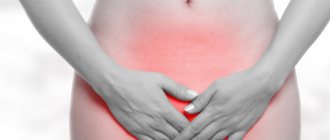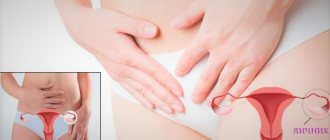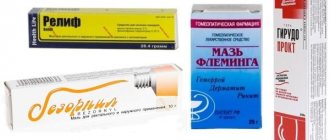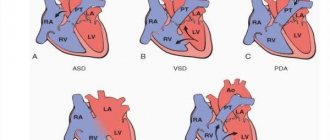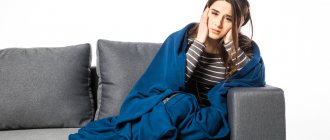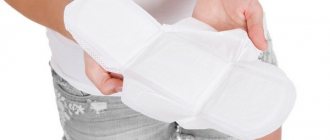Internal hemorrhoids are quite common in women. The cause may be childbirth and pregnancy, a sedentary profession, or poor nutrition. What is the most effective treatment for hemorrhoidal disease in women?
Proctological diseases in women are treated by a proctologist
- Symptoms of the disease
- Diagnosis of pathology
- How to treat internal hemorrhoids
The internal form of hemorrhoids is much more insidious than the external form, since it manifests itself with meager symptoms. The signs are not always noticeable to an uninformed person in this matter. Considering the level of employment and the increased rhythm of life of a modern woman, proctologists have to deal with prolapsed hemorrhoids much more often.
Internal and external pathologies require different treatment
It should be remembered that the internal, earlier form of the disease is easier to treat and eliminates faster. It causes much less inconvenience and promises a lower likelihood of relapse.
The reasons for the development of internal forms of pathology in women are very diverse. This could be poor nutrition, a sedentary profession, pregnancy and childbirth, or heavy lifting. It is also important to note about hereditary predisposition.
By eliminating the causes of the disease, you can count on a positive effect in treatment
Causes
Signs of hemorrhoids are diagnosed in women much more often than in men. The reasons leading to the development of this pathology are varied.
The most common ones:
- sedentary lifestyle;
- bowel dysfunction in the form of frequent constipation alternating with diarrhea;
- dietary errors and frequent consumption of spicy foods;
- alcohol abuse;
- occupational hazards associated with physical inactivity (drivers, pilots, office workers);
- lifting weights;
- pregnancy and childbirth.
Any of these reasons can serve as an impetus for the development of a pathological process in the rectum.
Peculiarities
The appearance of dilated veins in the lower part of the large intestine in women can pose a serious threat to health, and in some cases, to life .
The danger of female hemorrhoids manifests itself as follows::
- More serious health problems (rectal fissure, malignant neoplasm) may be disguised as a disease;
- a pathologically altered vascular wall has a tendency to break its integrity, which can lead to massive bleeding with the development of anemia;
- a long-term inflammatory process and congestion in the lower part of the large intestine can provoke the formation of blood clots in the nodes, the rupture of which is fraught with thrombosis of blood vessels of various organs;
- Symptoms of hemorrhoids in women may occur due to the use of hormonal drugs, which may result in uterine and hemorrhoidal bleeding.
The appearance of discomfort in the rectal area is an indication for visiting a specialist for the purpose of early diagnosis and treatment of the initial manifestations of the disease.
Symptoms of the disease
In order to know when to contact a specialist for diagnosis and treatment, it is important to learn to recognize the signs of the disease.
The first to appear is a slight itching and soreness of the rectum, which occurs during defecation and is almost imperceptible after the end of the act. Subsequently, the sensations are supplemented by a burning sensation.
Itching, burning, pain, heaviness in the abdomen, feeling of the presence of a foreign object in the anus
As the disease progresses, the intensity of pain may become greater. Quite often, the process of defecation itself turns out to be complicated already in the first stages of the disease. This occurs due to the formation and growth of a hemorrhoid. As it increases in size, it reduces the area of the passage, reducing its throughput.
Symptoms of internal hemorrhoids in women are often confused with other proctological pathologies. Therefore, a consultation with a proctologist is required.
What do internal hemorrhoids look like? Only the dropped node can be recognized. It looks like a dense ball that hurts when pressed.
As events develop, the patient begins to feel pressure in the rectum, the presence of a “foreign body” there. This means that the size of the lump has reached the limits of discomfort and you should immediately seek qualified help.
Bloody discharge at the initial stage of the disease is rare. Most often they occur when the size of the node is large enough. In this case, defecation occurs with complications and requires muscle tension. This leads to a rush of blood to the pelvic organs and the formation of an increased load on the vessels. As a result, it causes cracks to occur.
The first signs of blood on toilet paper, personal hygiene products and stool are a very alarming sign that requires immediate action. Delaying a consultation is no longer acceptable.
Classification of the disease
Varicose veins of the rectum can be an independent disease or a manifestation of another pathology.
In the classification of the disease, the following types of hemorrhoids are distinguished::
- hereditary or congenital;
- acquired;
- primary (independent nosological unit);
- secondary (manifestation of another pathology);
- subcutaneous, or external;
- submucosal, or internal.
Like any pathological process, the disease goes through several stages of its development . The progression of the disease aggravates the clinical manifestations of hemorrhoids.
Causes of exacerbation of hemorrhoids in women
The chronic form of the disease worsens under the influence of the following factors:
- Poor nutrition: foods that irritate the intestinal mucous membranes, low fiber, vitamins, roughage.
- Low activity - a return to a sedentary lifestyle and sedentary work will provoke venous congestion in the hemorrhoids.
- Pregnancy, menstruation - these conditions change hormonal levels, affecting the intestinal muscles and the condition of blood vessels.
Menstruation does not always cause exacerbations, but in the case of disrupted hormonal levels and the menstrual cycle, the pathology worsens and requires re-treatment. To prevent relapses, it is necessary to strictly follow all the recommendations of the proctologist, eat right and maintain an active lifestyle.
First signs
Early consultation with a doctor and timely diagnosis of hemorrhoids can prevent the progression of the disease and the development of its complications.
At the initial stage, the pathological process in the rectal area manifests itself as follows :
- the appearance of itching in the rectum area;
- feeling of heat in the perineum;
- presence of mucus during bowel movements;
- discomfort in the form of a sensation of a foreign body in the rectum.
It is at this stage that treatment of hemorrhoids gives the best effect.
Prevention
Preventive measures are a good opportunity to protect yourself from the occurrence of a pathological process or prevent the exacerbation of a chronic disease. Moreover, the factors that provoke hemorrhoids can be more or less successfully excluded from your own life.
To prevent the appearance of anorectal varicose veins, experts advise adhering to certain rules and principles. Let's take a closer look at them.
- Diet correction. Doctors recommend avoiding salty, smoked and fatty foods. Priority is given to foods that prevent the development of constipation: fermented milk dishes, fruits and vegetables, cereals, whole grain bread. It is better to eat fractionally – 5-6 times a day.
- Refusal to lift heavy objects. If possible, avoid lifting or carrying heavy objects. Strength sports involving increased physical activity are also not recommended.
- Rejection of bad habits. Alcoholic drinks and smoking irritate the rectal mucosa and increase blood flow to the pelvis. Strong coffee and tea drinks have the same effect.
- Going to the toilet correctly. When defecating, you should not strain too hard or sit in the toilet for a long period of time. This is known to increase the pressure inside the peritoneum.
- Prevention of constipation. Improving the functioning of the digestive tract is achieved by optimizing nutrition, intestinal microflora and taking laxatives. The latter method is not preferable because laxatives cannot be used for too long.
- Increased activity. Doctors recommend moving as much as possible, walking, and swimming. Office workers are advised to periodically take a short break and do physical exercise. However, it is important to remember that you should not exceed the permissible load.
- Pregnancy tracking. Expectant and nursing mothers should monitor their health even more closely, following all the rules described above. In addition, the doctor may recommend special exercises to strengthen the muscles in the pelvic area.
The doctor’s task is to help the patient treat the disease. However, the patient himself should be more attentive to his own health, including by implementing the preventive measures listed above.
Symptoms of internal and external hemorrhoids
In clinical proctology, hemorrhoids are differentiated according to the area of their localization . In the internal form of the disease, varicose nodes located in the submucosal layer and above the anus cannot be seen. They are detected during instrumental examination of the rectum. The nodes can “climb out” only at the last stage of the disease.
Distinctive signs of pathology:
- the presence of blood in the stool;
- pain during defecation;
- the appearance of constipation and difficulty in bowel movements.
A characteristic feature of external hemorrhoids is the low location of hemorrhoids, which can be seen and recognized, since they are localized below the sphincter.
External hemorrhoids, unlike internal ones, are accompanied by severe pain and, in rare cases, bleeding.
A combination of both types of disease often occurs. In this case, the symptoms of the disease contain manifestations of external and internal hemorrhoids.
Types of disease
There are several factors that underlie the classification of hemorrhoidal disease: the clinical course of the pathological process and the location of hemorrhoids.
Based on their clinical course, there are 2 types of hemorrhoids:
- acute - the disease proceeds more vividly, characterized by sudden severe pain, cyanosis and swelling of the nodes, fever, bleeding, inflammation, and the formation of blood clots in the veins;
- chronic - this form of the disease is characterized by a wave-like course, when periods of remission and exacerbation alternate. Vivid symptoms appear during relapse of the disease.
Both forms of the pathological process require seeking medical help. It is the proctologist who, after carrying out diagnostic procedures, will explain to the patient how and how to treat the disease, which methods of therapy are most preferable in a particular case.
Based on the location of the cavernous formations, there are 3 main types of hemorrhoidal disease:
- internal hemorrhoids - enlarged venous plexuses are located in the submucosal layer of the rectal canal above the so-called serrated line. Signs of internal hemorrhoids in women include frequent bleeding and constipation;
- external hemorrhoids - inflamed cavernous formations are located under the skin below the serrated line (around the anus);
- combined hemorrhoids - as the name suggests, the affected areas are located on both sides of the dentate line. This is the most difficult form of the disease from a therapeutic point of view.
Thus, the manifestations of hemorrhoidal disease are diverse and depend on the form and type of disease, the stage of the pathological process. But the symptoms do not depend on gender. That is, the signs of pathology in women are no different from the symptoms of the same disease in men.
Stages of the disease
The disease in women goes through four stages in its development with the following characteristic signs :
- Slight swelling and enlarged nodes, periodic discharge of scarlet blood from the anus.
- There is a prolapse of nodes, which are reset on their own.
- Prolapse of nodes that are forced into the rectum manually.
- The nodes fall out constantly, and it is not possible to set them back.
As the disease progresses, the pain syndrome intensifies and becomes the main complaint of women. The appearance of blood in the stool becomes more frequent, and the discomfort intensifies.
Symptoms
Unlike representatives of the stronger sex, hemorrhoids occur differently in women. It all depends on the individual characteristics of the body, emotional stability, and the number of births. Some people experience some symptoms later, others earlier.
The main symptoms of hemorrhoids in women:
- pain in the sphincter area, worsening when sitting and during movement;
- severe itching and burning;
- drops of blood in the stool or heavy bleeding from the rectum;
- increase in hemorrhoidal cones and their loss;
- feeling of incomplete bowel movement.
During an exacerbation, heaviness in the stomach is noted, the temperature rises to 38 ° C, the venous nodes become black and blue.
Pain in women with hemorrhoids can be localized in the abdomen or in the sphincter area, affecting the tailbone and lower back. Such sensations are especially frightening for pregnant women.
Diagnostics
The appearance of discomfort and nodes in the anus requires a mandatory visit to a specialist who diagnoses and treats pathological processes in the rectal area - a proctologist.
Diagnostic measures begin with a visual examination of the anal area . At the same time, its shape, the presence or absence of scars, deformations and fistulas, the color of the skin, the degree of severity of the nodes and the possibility of their reduction are noted.
After the examination, a digital examination of the rectum is performed.
More accurate diagnostics are provided by instrumental research methods, such as:
- Ultrasound of the abdominal organs;
- sigmoidoscopy;
- colonoscopy;
- irrigoscopy.
After a detailed examination, the patient is given a final diagnosis and treatment is prescribed.
Treatment at home
Folk remedies for hemorrhoids in women are used as an adjunct to drug treatment. They are most effective in the initial stages of illness. Medicinal herbs significantly alleviate the condition of hemorrhoids, relieve pain and inflammation, but do not eliminate the main cause of the disease. Before using them, you should consult a doctor, since natural remedies often cause allergies.
Cool sitz baths with potassium permanganate or infusion of chamomile, oak bark, and celandine can relieve pain from acute hemorrhoids in women. The same solutions should be used to wash the anus area after each bowel movement.
Another effective remedy for eliminating the manifestations of acute hemorrhoids in women in external nodes is ice from an infusion of medicinal herbs. Cold cubes are placed in a clean napkin and applied to the inflamed areas for 5-6 minutes. The main thing is not to overdo it and not to keep the compress longer than the specified time.
Candles for hemorrhoids, made independently from honey, propolis and sea buckthorn oil, help cope with the disease in women. The ingredients are kept in a water bath until completely dissolved, then cooled and poured into molds. The preparations are placed in the freezer. A course of treatment will require 10 suppositories.
An effective folk remedy for hemorrhoids is microclysters made from carrot or beet juice, or a decoction of medicinal herbs. Raw potatoes are useful for internal and external inflammation. Enemas and lotions are made from freshly squeezed concentrate, and the whole vegetable is suitable for making rectal suppositories.
Hemorrhoids in pregnant women
Pregnancy and childbirth are a common cause of hemorrhoids in women . This occurs due to anatomical changes in the body during pregnancy.
In addition to the main reason for the development of pathology, there are a number of factors contributing to the appearance of hemorrhoids :
- new taste preferences;
- increased appetite, contributing to excessive weight gain;
- rapid growth of the uterus (it puts pressure on the vascular network of the pelvic organs, which provokes congestion);
- decreased motor activity.
Any of these reasons can lead to the formation of hemorrhoids in a pregnant woman.
Danger during childbirth
Despite the presence of discomfort and other manifestations of hemorrhoids when carrying a child, this pathology is not a contraindication for the natural course of childbirth .
Often the disease is diagnosed in the second trimester of pregnancy . It is important for a woman to undergo timely treatment in order to prevent dangerous complications of the disease during childbirth, such as:
- bleeding from nodes, which may require first aid;
- infection and strangulation of nodes;
- development of thrombophlebitis;
- transformation of chronic hemorrhoids into an acute condition with the development of paraproctitis and necrotic lesions of the nodes.
Due to the strong increase in abdominal pressure during pushing, untreated hemorrhoids can lead to bleeding with further development of anemia .
Causes of pathology
Hemorrhoids in women can develop as a result of a genetic predisposition, but more often it is an acquired pathology as a result of an unhealthy lifestyle. Even at the stage of intrauterine development, large rectal cavities can form in the fetus, which can provoke hemorrhoidal disease after the birth of the baby. Moreover, this applies specifically to internal hemorrhoids. Otherwise, the trigger is a person’s lifestyle:
- “sedentary” work, physical inactivity;
- unbalanced diet, including drinking;
- lifting weights;
- obesity;
- disruption of blood flow in the pelvic organs due to various reasons: menstruation, pregnancy, childbirth, tumor, inflammation, cyst, intestinal obstruction, impaired peristalsis, erosive and ulcerative processes, intestinal and urogenital infections, trauma to the rectum, atrophy of the muscles of the anus, anorectal area;
- anal sex;
- taking certain medications that cause dyspepsia or constipation.
One of the main causes of hemorrhoids in women is stool disorders.
Postpartum period
Hemorrhoids in the postpartum period occur in half of women who give birth . If the birth was not protracted, then the disease may not occur. A long period of pressing often causes the appearance of external hemorrhoids.
After a visual examination of the woman by a gynecologist, a consultation with a proctologist is scheduled to clarify the diagnosis and carry out therapeutic measures.
Important! The appearance of discomfort in the rectal area in a pregnant woman is an indication for examination by a specialist to exclude the development of hemorrhoids.
Surgery
If conservative therapy and minimally invasive techniques are ineffective, the woman is prescribed surgical intervention. Surgery to remove hemorrhoids is performed under general anesthesia or epidural anesthesia. Classic hemorrhoidectomy is considered the most effective method of getting rid of the disease and is used at any stage. The course of the operation is 40 minutes, and the postoperative period is up to 4 weeks. Two more surgical techniques are used to remove hemorrhoids:
- Operation Longo. It is characterized by excision of the affected tissue using a circular endostapler. At the same time, the mucous layer of the rectum is sutured around the perimeter with titanium staples.
- Transanal disarterialization. The purpose of the operation is to stitch the hemorrhoidal arteries under the sight of a special endorectal sensor.
Treatment
The treatment tactics for the disease are selected depending on the stage of the pathological process . Therapy can be either conservative or surgical.
The scope of treatment measures is determined by a specialist, taking into account the individual characteristics of the body and the course of the disease :
- External and internal hemorrhoids are initially treated with a conservative method. Minor clinical manifestations are actively treated with medications in the form of ointments, gels, and suppositories.
- Pathological symptoms in the second stage of hemorrhoids (with periodic prolapse of nodes from the anal canal, self-reducing) can be stopped by a course of conservative therapy. Negative phenomena in the form of mucus and blood during bowel movements are relieved with medications.
- In the third stage of the disease (with prolapse of nodes that can only be moved into the anal canal manually), more radical treatment is used using minimally invasive methods: dystrophic changes occur in the muscles of the rectum, resulting in a sharp decrease in the firmness and elasticity of the muscle layer.
- The progression of hemorrhoids in girls to the fourth stage, when prolapsed nodes cannot be returned to the rectum, requires only surgical treatment, since the clinical manifestations of the disease are pronounced. The consequences of such an advanced disease can threaten the health and life of the patient.
- Of the special types of pathological process, the following forms are distinguished:
- acute hemorrhoids - development is possible with internal and external course of the disease. A characteristic feature is the formation of blood clots in the nodes. The inflammatory process is accompanied by acute pain, swelling of the perineum, and fever. If the nodes rupture, heavy bleeding may occur. Treatment measures are carried out in the form of intensive conservative therapy;
- combined hemorrhoids - localization of hemorrhoids outside and inside. The course of the process is chronic, with periodic exacerbations and remission. Treatment measures are carried out by a specialist taking into account the clinical picture and can be conservative or radical.
Treatment of hemorrhoids during pregnancy is most often carried out conservatively . If this type of therapy is not successful, surgery is possible. As a rule, it is prescribed only for special indications.
Features of therapy
Treatment of internal hemorrhoids in women is carried out conservatively or surgically. Therapeutic techniques are designed to relieve inflammation, pain, bleeding, regenerate tissue, and prevent or mitigate possible relapses. As a rule, internal hemorrhoids in women and men are treated with systemic drugs and suppositories of different pharmacological groups. The main ones are phlebotonics, hemostatics, agents that relieve inflammation and pain, regenerants, immunomodulators, and disinfectants. All of them are part of the complex treatment of hemorrhoids.
Systemic therapy
Systemic medications include tablets that have an effect on the entire body, correcting the general blood flow and, as a special case, microcirculation of the rectum. Therapy with systemic drugs is based on the correction of hemorrhoidal pathology from the very first stages and has a number of features:
- quickly relieves the severity of the process;
- effective for latent flow;
- simply replaced by an analogue;
- convenient in preparation for and after surgery;
- combined with other types of therapy.
The active substance of systemic tablets are flavonoids. The most popular:
- Detralex (640 rubles) and its domestically produced analogue - Venarus (490 rubles). The essence of the action is the normalization of anorectal blood flow.
- Phlebodia 600 (850 rubles) is a venotonic with angioprotective properties, relieves pain and inflammation.
- Antistax (580 rubles) is a natural drug that gently tones the veins, relieves pastiness, and reduces the size of hemorrhoids.
- Troxevasin (300 rubles) is one of the best synthetic venotonics with angioprotective properties, relieves pain, inflammation, and regenerates tissue.
- Vazonit (400 rubles) – phlebotonic, angioprotector, improves blood supply to the anorectal area.
External medicines
External preparations are used in women as they are the most convenient for home use. Contact therapy is the most effective treatment method at the first stage of the disease. The following liniments and suppositories of different pharmacological groups are popular:
- Relief line (Advance, Ultra, Pro): suppositories, liniments on tampons soaked in ointment are inserted into the anus to stop bleeding, relieve inflammation, and pain. Regenerate injured hemorrhoids. The cost is about 400 rubles.
- Aurobin (280 rubles) - an ointment with a strong anti-inflammatory effect, anti-exudant, regenerant.
- Procto-Glivenol (360 rubles) - both external forms are used to treat rectal nodes: venotonic, analgesic, anti-inflammatory, normalizes microcirculation of the anus.
- Ultraproct with a hormonal component in two forms (180 rubles) - suppositories and ointment relieve pain, inflammation, itching, and pastiness of the anus.
- Proctosedyl M (310 rubles) - rectal capsules with anti-inflammatory, drying properties.
- Posterizan forte (480 rubles) is a regional immunomodulator with an anti-inflammatory effect.
- Gepatrombin and Gepatrombin G (120 and 165 rubles) are a popular thrombus-absorbing agent in the form of suppositories and ointments.
- Fleming's ointment (260 rubles) is a homeopathic aseptic with anti-inflammatory, analgesic, and drying properties.
- Proctosan (350 rubles) - suppositories and ointment relieve pain, inflammation, bleeding, good regenerants.
- Bezornil is an ointment with a combined composition (370 rubles): disinfects, astringents, relieves inflammation and pain.
- Heparin ointment is an inexpensive but effective drug (35 rubles), has an anti-inflammatory, analgesic effect, and reduces the risk of blood clots in the area of hemorrhoids.
- Lyoton 1000 gel (322 rubles) – antiplatelet gel.
- Troxevasin (170 rubles) is an ointment that is used in combination with capsules of the same name: the drug venotonic, relieves pain, inflammation, swelling.
- Methyluracil ointment (49 rubles) is an immunostimulant and regenerator drug.
- Levomekol (110 rubles) - an ointment with antiseptic, anti-inflammatory properties, a regenerant.
Minimally invasive techniques
Treatment of formed internal hemorrhoids in women using minimally invasive techniques consists of using:
- at the first stage of hemorrhoids - along with conservative methods: infrared photocoagulation, sclerotherapy (at the request of the patient);
- at the second stage - infrared photocoagulation, sclerotherapy, ligation with latex rings, disarterization, combined methods in combination with therapeutic methods of treatment;
- for stage 3 hemorrhoids in women, the following are indicated: ligation with latex rings, disarterization, transanal resection of the mucosa using the Longo method, combined methods, surgical treatment (hemorrhoidectomy);
- the fourth stage involves only classical excision of nodes.
Therapy methods
Treatment of hemorrhoids in women is carried out comprehensively. Elimination of clinical manifestations of the disease is carried out not only by medication . A positive result will be achieved only if all the doctor’s recommendations are strictly followed.
Diet and lifestyle correction
An important point in the treatment of the disease is the normalization of the gastrointestinal tract and regular bowel movements. The diet of women suffering from hemorrhoids should include foods containing fiber, cereals, vegetable soups, and dietary meat. Compliance with the water regime is mandatory.
Should be excluded from the menu:
- spicy and salty foods;
- confectionery;
- fatty meats and fish;
- canned and smoked products;
- alcoholic and colored carbonated drinks.
The patient needs to adjust her lifestyle:
- swimming, table tennis, taking long walks;
- avoid hypothermia;
- do not visit baths and saunas;
- Avoid sitting for long periods of time on soft chairs or sofas;
- Monitor your weight through proper nutrition and exercise.
Such measures, together with drug treatment of hemorrhoids, will help a woman stop its manifestations and significantly improve her quality of life.
Conservative therapy
In the treatment of hemorrhoids, specialists actively use various medications for external use. They have a pronounced anti-inflammatory, hemostatic and analgesic effect, relieve swelling, and prevent the formation of blood clots.
products for external use are considered the most popular :
- ointments “Relief” and “Relief Advance”;
- ointment "Hepatrombin G";
- gel "Troxevasin";
- ichthyol ointment.
Therapy for internal hemorrhoids involves the use of rectal suppositories:
- "Relief Ultra";
- with belladonna;
- with sea buckthorn oil.
Such active treatment helps to quickly relieve the inflammatory process , relieve discomfort and improve the woman’s overall health.
Surgical methods
In the treatment of hemorrhoids, minimally invasive methods are often used that do not involve the use of a scalpel. They give a good effect and help quick recovery.
The following minimally invasive techniques are used in proctology::
- sclerotherapy;
- infrared coagulation;
- latex ligation;
- cryodestruction.
These techniques in some cases can replace conservative treatment and are used in the first three stages of hemorrhoid development. The surgical radical method of removing hemorrhoids is rarely practiced and only in the fourth stage.
Folk remedies
You can treat hemorrhoids at home using traditional medicine recipes. To stop the inflammatory process, warm sitz baths with an infusion of oak bark, chamomile, calendula and bay leaf have a positive effect.
For internal hemorrhoids, microenemas with infusion of strawberry leaves or vegetable oils give good results. This treatment option is indicated for constipation, as it has a laxative effect.
Important! Treatment with traditional recipes is possible only after consultation with a specialist and as an addition to basic drug therapy.
How to treat internal hemorrhoids
It was previously noted that the treatment of internal hemorrhoids in women, unlike external ones, can be carried out using a wider range of methods. This applies not only to medications, but also to minimally invasive methods.
The initial stage of treatment of the disease is considered to be a medicinal effect on the proper functioning of the gastrointestinal tract. This is done in order to eliminate constipation, which in 90% of cases leads to complications of the disease.
Most often, domestic medicine offers us a medicinal effect on the body in combination with non-drug treatment. So, in addition to the use of rectal suppositories, ointments, tablets and other dosage forms of drugs, the patient is prescribed a special diet and controlled physical activity.
The course of treatment can be supplemented with substances of natural origin, that is, traditional medicine.
Drug treatment
For internal hemorrhoids, as prescribed by a specialist, laxatives can be taken (usually in the form of tablets and pills or drops), anti-inflammatory and anti-infective, antiseptic (most often applied locally, that is, suppositories, ointments, etc.), as well as vascular stimulants in various forms.
The purpose of the latter is to normalize blood circulation, increase vascular tone, and their resistance to damage and sprains.
Phlebotonics improve blood flow, relieve inflammation, reduce pain
Among the powerful and effective drugs are the French Detralex and the Russian drug Venarus.
If the patient complains of severe pain, then painkillers are prescribed in the form of gels and rectal suppositories. For example, Relief, Proctosan, Ultraproct.
In cases of suspicion and prevention of thrombosis of hemorrhoids, anticoagulants are prescribed in the form of an ointment (Heparin ointment).
If complications already occur, drugs with powerful effects are prescribed (Proctosedyl, Hepatrombin, Proctosan).
If the anal area is inflamed and there is itching and burning, topical medications are used (Voltaren, Xefocam).
Rectal suppositories effectively relieve inflammation in the rectum
In cases where hemorrhoids bleed, they resort to the use of special rectal suppositories (Relief, Natalsid) and phlebotonics containing diosmin (Venarus, Detralex).
As part of a consultative or diagnostic appointment, the patient can ask the doctor about what internal hemorrhoids are, what symptoms should be alarming, and what type of treatment is most effective in this situation.
It should be noted that the treatment regimen is always individual and depends on the symptoms and causes in a particular medical history. The stage of development of the disease, the presence of previously manifested relapses, concomitant diseases, etc. also matter.
The doctor’s primary task is to improve the patient’s quality of life by eliminating discomfort and preventing further development of the disease. As the patient's condition improves, everything possible is done to completely eliminate the disease.
Effective suppositories for internal hemorrhoids
Folk remedies
Treatment at home is effective only at stage 1 of the disease. Rectal suppositories made from young raw potatoes will help to quickly relieve inflammation and pain.
Among the folk remedies we can highlight: baths with the addition of beneficial herbs, lotions and enemas, decoctions of beneficial plants.
Removal of hemorrhoids
In advanced stages of the disease, surgery is indispensable
Minimally invasive treatment methods that have long been tested and approved by Western doctors are becoming increasingly widespread. The process of getting rid of the problem is faster. As a rule, several procedures are enough, less often - just one. The likelihood of relapse, with a reasonable prevention program, decreases. At the same time, the capabilities of modern medicine remain at a high level.
If conservative treatment does not give a good prognosis, and the disease begins to enter the chronic stage, then surgery to remove it is performed in 99% of cases.
Doctors have many methods for radical removal of hemorrhoids in their arsenal. It is pleasant to consider the most popular methods:
- Sclerotherapy of internal nodes.
The method is relevant for heavy bleeding and in cases of preventing serious complications. The essence of the procedure is the introduction of a special medicinal substance into the hemorrhoidal node using both an anoscope and a needle.
- Infrared photocoagulation. Infrared radiation is applied to the legs of the internal node, carrying out tissue coagulation.
Other methods of treating internal hemorrhoids include: ligation of hemorrhoids with latex rings, Longo's operation, disarterization of nodes, hemorrhoidectomy with the LigaSure device.
The use of sclerotherapy, ligation and photocoagulation provides an almost 100% ability to defeat pathology at its various stages.
Prevention of hemorrhoids before or after treatment should be based on proper nutrition, elimination of constipation and diarrhea, hygiene of intimate areas, an active lifestyle and basic gymnastic exercises. Girls should take care to prevent illness before pregnancy and childbirth.
THERE ARE CONTRAINDICATIONS CONSULTATION WITH YOUR DOCTOR IS REQUIRED
Author of the article Alexey Alexandrovich Egorov, proctologist
Write your opinion
Treatment with folk remedies
Today, treatment of hemorrhoids with folk remedies takes place, but before using it, it is necessary to consult with your doctor, since folk remedies can only complement medications, but not replace them. Use folk remedies in tandem with prescribed medication. Quite often, doctors prescribe anti-inflammatory herbs:
- sage,
- chamomile,
- calendula.
Decoctions of medicinal herbs can be used for soothing baths and enemas. The use of decoctions of potato peels, birch tar, and aloe effectively relieves the symptoms of the disease. Juice from grated, raw potatoes will help relieve the inflammatory process. It should be consumed half an hour before meals, three times a day.
Factors influencing the appearance of female hemorrhoids
Exacerbation of hemorrhoids in adult women is observed at certain periods of life. This sign is absent in men. The first manifestations are provoked by physiological conditions that cause increased blood flow into the pelvis: menstruation and pregnancy. During pregnancy, the growing fetus compresses the venous network, impairing the outflow. Attempts during childbirth aggravate the onset of signs of hemorrhoids.
Pathological conditions for the origin of hemorrhoidal changes arise against the background of increasing tumors of the uterus and appendages. They sprout with additional vessels, accompanied by increased pressure on the intestine.
The causes of hemorrhoids in women cannot be associated only with frequent childbirth. It has been established that the disease develops in 7.4% of nulliparous women. There are several common aggravating factors with men:
- heavy physical activity - we often see women in “male” jobs (construction, railway maintenance; the owners’ desire to save money forces female sellers to unload the delivered goods), a passion for bodybuilding;
- poor nutrition - lack of a sufficient amount of vegetables and fruits in the diet, diets, passion for spicy and fried meat foods are accompanied by constipation, straining during bowel movements;
- atonic and spastic constipation in old age create conditions for traumatizing the wall of the nodes with hard feces and the appearance of anal fissures;
- insufficient physical activity is usually manifested by excessive weight gain;
- possible congenital causes of predisposition to hemorrhoids due to low levels of collagen production in connective and muscle tissue, sagging of the valve apparatus of the veins, deterioration of outflow;
- Alcoholism develops much faster in women due to the enzymatic characteristics of the body in the absorption of alcohol; nicotine addiction aggravates damage to the structure of the venous sinuses.
Women should be included in the probable risk group for early hemorrhoids:
- a profession associated with prolonged forced sitting or standing idle - accumulation of blood in the lower parts of the body due to body position contributes to the development of decompensation of adaptive mechanisms (teachers, salespeople, hairdressers, cashiers, secretaries, transport drivers);
- often encountering stressful situations at work, in the family (EMERCOM workers, ambulance workers, police, dispatchers, heads of institutions), it has been established that repeated psychological stress negatively affects the more susceptible female body with heightened empathy and suppresses the adaptation reaction.
Gynecologists point to pronounced signs of hemorrhoids in young women after rough anal sex.
Complications
Complications of hemorrhoids include:
- Vein thrombosis;
- Infringement of nodes;
- Prolapse of varicose formations;
- Rectal bleeding;
- Insufficiency of the anal sphincter.
Hemorrhoids lead to stagnation of blood in the veins, and this causes thrombosis. Symptoms of this complication are an enlargement of the nodes, their acquisition of a bluish-purple hue and sharp pain in the perianal area, which increases during palpation.
A frequent complication of stages III-IV is constant bleeding from the cavernous bodies. With it, the patient complains of general weakness (which is due to increasing anemia). Tests show a drop in blood hemoglobin to 40-50 g/l.
In elderly patients, frequent prolapse of nodes against the background of progressive hemorrhoids sometimes leads to weakness of the anal sphincter. This complication is manifested by incontinence of gases and even the contents of the rectum (liquid fecal matter).
Stages of hemorrhoids
The more advanced the disease, the more radical the method used to treat it. The development of hemorrhoids occurs in 4 stages:
- It is characterized by swelling and bulging of captive, sometimes bleeding nodes. An increase in the vascular pattern of the mucous membrane and minor anatomical changes in the longitudinal muscle are observed.
- At this point, the hemorrhoidal cones will increase in size and will be denser and more painful. When defecating, they come out (this is a reversible process, they go back in on their own). Blood and inflammatory fluid ooze from the rectum - it irritates the anus, causing uncontrollable itching and discomfort. Women will be nervous. And already at this stage, almost 80% of them turn to a doctor for help.
- It occurs against the background of increasing anal itching and frequent bleeding. Prolapse of nodes requires manual or instrumental reduction. Laboratory studies reveal morphological changes in muscle tissue, indicating the predominance of dystrophic processes and loss of elasticity.
- There is also a group of persistent women who engage in ineffective self-medication and “spit on some doctor.” They have a unique chance that the 4th stage of the disease will soon develop! I don’t even want to talk about wild discomfort, pain, suffering. We will describe only the main symptoms: severe bleeding during bowel movements, lumps of different sizes inside and outside the anus, the inability to straighten the nodes in any way (even manually), blood clots appear.
Despite the causal features, the symptoms of hemorrhoids in women and girls are typical and no different from those in men.
Symptoms of hemorrhoids in men and women
A person who develops hemorrhoids may initially experience a feeling of discomfort in the anus from time to time, which in most cases is the main signal of the development of hemorrhoids.
Later, other symptoms of the disease appear.
Sensation of a foreign body in the anus, hemorrhoids heaviness and inflammation. These manifestations may be one of the first symptoms of hemorrhoids. They arise due to swelling and displacement of the internal folds of the anal canal. They may not bother you all the time, but only at certain times.
Anal itching and burning. Such unpleasant symptoms of hemorrhoids arise as a result of prolapse of hemorrhoids, as well as the release of blood and mucus, which irritates the mucous membrane and skin in the anus area. Chronic hemorrhoids cause itching during bowel movements.
Bleeding. This is the most typical symptom of hemorrhoids. Bleeding is periodic and can also vary in duration and color. In most cases, they occur during bowel movements, but it is possible that they may occur in the intermediate period. Blood may be released in the form of droplets after the stool is passed, and may also be present in the stool itself. Depending on the severity of the bleeding, blood can leave marks ranging from small marks on toilet paper to large splatters on the toilet.
Prolapse of hemorrhoids. Hemorrhoids are dilated veins of the choroid plexuses of the rectum. Their loss is one of the most characteristic symptoms of hemorrhoids. There is a direct relationship between this symptom of hemorrhoids and the stage of the disease. At the initial stage, the fallen nodes are easily set inward on their own, and at later stages they are set only as a result of manual intervention, or are not set at all.
Pain. As a result of the progressive development of hemorrhoids and strangulation of hemorrhoids, pain is a common symptom of the disease. They can occur during bowel movements, while walking, while sitting, and can also be permanent. Often the pain intensifies with exacerbation of hemorrhoids.
If you have hemorrhoids and you have a question about which doctor to see, then the answer is simple - you should make an appointment with a proctologist.
Increasing the amount of dietary fiber and fluid in your diet will help reduce symptoms. Good sources of dietary fiber include bread and bran products, fruits and vegetables. Reducing the force and duration of straining during bowel movements will reduce the pressure on hemorrhoids and prevent their prolapse.
Course and manifestation of hemorrhoids
Hemorrhoids are usually characterized by a periodic course, that is, periods of exacerbation and remission.
The listed symptoms and signs of hemorrhoids most often bother patients during the development of the disease and are serious signals for taking emergency measures.
Hemorrhoids, like many other diseases, are much easier to cure in the initial stages of the disease, otherwise the patient will face surgical intervention and a long course of treatment. If nothing is done against hemorrhoids in time, the disease may be accompanied by the occurrence of other diseases against its background, such as chronic and acute anal fissure, anemia, rectal fistula, thrombosis, ulcers around the rectum, and weakened ability to retain gases.
In advanced cases, complications of acute hemorrhoids may develop, such as massive bleeding, swelling of the anus, purulent paraproctitis (purulent inflammation of the tissue), necrosis (death) of hemorrhoidal tissue.
The dangerous consequences of hemorrhoids are polyps and malignant tumors of the intestine, which have symptoms similar to hemorrhoids. Pain and bleeding during bowel movements can be a manifestation of rectal pathologies such as polyps or cancer.
Stages of hemorrhoids
| Stages | Symptoms | Clinical picture |
| 1 | Bleeding, discomfort | Hemorrhoids do not protrude from the anal canal. The vascular pattern of the mucous membrane is enhanced |
| 2 | Bleeding, prolapse of nodes, itching, mucous discharge | Hemorrhoids prolapse during bowel movements and then reset on their own |
| 3 | Bleeding, prolapse of nodes, anal itching, mucous discharge | Hemorrhoids fall out not only during defecation, but also during physical stress and are manually adjusted by the patient |
| 4 | Bleeding, constant prolapse of nodes, anal itching, sphincter incontinence, pain syndrome | Constant prolapse of hemorrhoids, with the impossibility of their reduction |
Diagnosis of hemorrhoids
An examination by a coloproctologist involves complex procedures, among which it is worth noting an examination of the rectum. Upon examination, external hemorrhoids can be identified, and by carefully spreading the edges of the external anal sphincter, internal nodes can be identified. Using a digital rectal examination, which should be carried out in all cases, except those when there is an exacerbation of the process, it is possible to establish the presence of compacted hemorrhoids, the tone of the anal sphincter, and identify concomitant diseases of the rectum. To establish that hemorrhoids have come out, the patient is asked to strain. The doctor must also perform a sigmoidoscopy. A thorough examination of the patient allows us to exclude anal fissure, paraproctitis, polyps and rectal cancer.
Modern diagnostic methods
The lack of obvious symptoms and visible signs makes it difficult to recognize the problem, especially in the early stages of hemorrhoids. If there is a suspicion of an internal form of the disease, the proctologist uses the simplest examination method - palpation. Immersing his index finger in a medical glove into the opening of the anus, he feels all the bulges adjacent to the sphincter, assesses their density, size, and pain. This method allows us to identify the Hilton line, which separates external and internal formations. Palpation helps determine the tone of the sphincter. If his muscles are weakened, the likelihood of prolapse of nodes and parts of the mucous membrane during muscle exertion is high.
The disadvantage of this classic method is that it only reveals the presence of lumps at the opening of the anus. For a more detailed examination, special tools are needed. Instrumental methods for examining the intestine for internal hemorrhoids:
- Anoscopy. This is done using a mirror on the device (it is additionally equipped with a backlight). The device makes it possible to view the rectal tract at 10-12 cm.
- Sigmoidoscopy.
The method of studying the condition of the mucous membrane using an endoscope allows you to see cavernous formations to a depth of 30 cm. An additional device can take samples for a biopsy if neoplasms in the intestine are suspected.
- Ultrasound examination with a special sensor that allows you to study the intestines and anus in detail.
- An X-ray examination of the abdominal cavity is also possible.
If hemorrhoids are inflamed and painful, instrumental examination may worsen symptoms. In order not to damage the problem area, inflammation and pain are first eliminated, and then an additional examination is carried out.
Before visiting a proctologist, it is advisable to prepare the intestines. In addition to the act of defecation and hygiene procedures, a cleansing enema will not be superfluous. If the intestines (primarily the lower section) are full, the examination will be ineffective.
In addition to the above methods, laboratory testing is also carried out: a blood test to identify signs of anemia, a coccogram demonstrating the functionality of the intestines, a test for hidden internal bleeding that is not visually noticeable, and a stool examination.
Differential diagnosis of internal hemorrhoids is designed to exclude oncological problems, since oncological nodes are also prone to bleeding and can cause a feeling of heaviness in the anus. In the initial stages of development, their clinical picture is very similar.
Operation
If conservative methods do not help, surgical intervention is used.
- Ligation with latex rings is used in the second (third) stage of internal hemorrhoids. The procedure is performed on an outpatient basis using an anoscope. Hemorrhoidal nodes are compressed with special latex rings, as a result the problem solves itself - the blood supply to the nodules is disrupted, and they simply die. The procedure is effective and inexpensive, but painful and long - only one node can be treated in one session.
- Infrared photocoagulation is performed under local anesthesia and does not require hospitalization of the patient. With this method, the affected area is treated with light waves of the infrared spectrum, which leads to the cessation of blood supply and drying of the node. The disadvantage of this method is the risk of blood clot formation at the cauterization site.
According to indications, sclerotherapy, laser coagulation, and cryotherapy are used. The most effective and drastic way to solve the problem is considered to be hemorrhoidectomy - removal of nodes using the usual surgical method.
How to cure patients?
Colonoproctologists know how to treat such patients. Treatment for uncomplicated internal hemorrhoids is conservative. The following methods are distinguished:
- use of rectal suppositories;
- normalization of nutrition;
- lifestyle correction;
- use of phlebotropic agents;
- administration of antiplatelet agents.
There are a large number of suppositories for hemorrhoids on sale. The most widely used rectal suppositories are: Relief, Posterizan, Troxevasin, Ultraproct, Anuzol, Anestezol. Proctosedyl-M rectal capsules have a good effect. In order to prevent the formation of blood clots, agents that inhibit platelet aggregation are used. This group includes Gepatrombin-G and Proctosedyl suppositories.
Pathogenetic therapy involves the use of drugs that increase the tone of the veins.
These include Phlebodia, Detralex, Venarus, Aescusan. They are taken orally for at least 3 months.
Not everyone knows how internal hemorrhoids in women are treated with diet. To prevent hemorrhoids from being injured, you need to adhere to a certain diet. The main goal is to soften stool and prevent constipation. Very often hemorrhoids are combined with anal fissures. This happens due to injury to the mucous membrane by solid feces. To make the stool soft, you need to drink more liquid (jelly, juice with pulp, compote with dried apricots and apricots). It is recommended to eat boiled and raw vegetables, fruits, bran, prunes, and figs. The diet should contain more fiber and pectin. It is required to stop drinking alcoholic beverages.
When the nodes begin to fall out and set on their own, sclerotherapy or laser coagulation can be performed. These are more radical methods of treatment. At stage 3 of hemorrhoids, when the nodes need to be set by hand, ligation or cryodestruction is required. If thrombosis develops, anti-inflammatory drugs are prescribed. In the later stages of the disease and with the development of thrombophlebitis, radical surgery is performed. During this procedure, dilated veins are removed.
Features of the treatment of internal hemorrhoids with bleeding
One of the possible manifestations of hemorrhoids is the formation of bleeding. As a rule, they appear after defecation or intense physical activity. Their formation is caused by the divergence of cracks or the scratching of hemorrhoids. With frequent bleeding, the treatment of hemorrhoids undergoes changes aimed at suppressing the corresponding symptoms.
A good effect in the fight against such manifestations of the problem is shown by the use of sitz baths or the use of microenemas with infusions of medicinal herbs that have a hemostatic and astringent effect.
In addition, ointments, suppositories and gels that help increase blood clotting are effective means for bleeding. In turn, taking the tablets is aimed at stimulating the cardiovascular system and increasing the elasticity of the vessels that form the tissues of the rectum. To quickly stop bleeding, various hemostatic drugs are used, such as special suppositories or collagen sponges.
At home, ordinary ice will help solve the problem. In addition to eliminating bleeding, it increases blood clotting and has an analgesic effect. However, it must be used with extreme caution due to the possibility of injury to the rectum or frostbite.
Help from alternative medicine
Treatment of one disease should not provoke another, therefore, before starting treatment with folk remedies, exclude allergic reactions from the body.
Internal manifestations of hemorrhoids can be treated with folk remedies only in the first stages of the disease.
Honey candles
They will be made from candied honey. A candle is formed from this product with clean hands and inserted into the anus. After the procedure, the patient is allowed to lie down for 20 - 30 minutes.
https://feedmed.ru/bolezni/serdechno-sosudistye/vnutrennij-gemorroj.html
Candles made from raw potatoes
Clean, fresh potatoes are cut into the shape of a candle and inserted with clean hands (so as not to introduce additional infection) into the anus.
The candle remains there until the process of bowel movement, then the patient needs to wash himself with cool boiled water and insert a new candle. The treatment period with this method is about 10 days.
Cold sitz baths
Dissolve several grains of potassium permanganate (manganese) in 1 liter of cold boiled water. The solution should take on a soft pink color. It is poured into a basin and sat in the solution for 5 minutes.
This procedure is carried out 2 times a day until the symptoms of hemorrhoids disappear. This treatment is contraindicated for people prone to cystitis.
Lard candles
The method has long proven itself in the treatment of this disease. The lard is washed, cut into pieces and sent to a press, which can be an ordinary garlic press; when squeezed, fat is released, which is what is needed for treatment.
The fat is collected and poured into cone-shaped foil pans. Then it is sent to the freezer, after hardening to a state resembling paraffin in appearance, the prepared preparation is freed from the foil and quickly inserted into the anus with clean hands.
Whatever treatment method a person chooses, it must be safe for his health.
